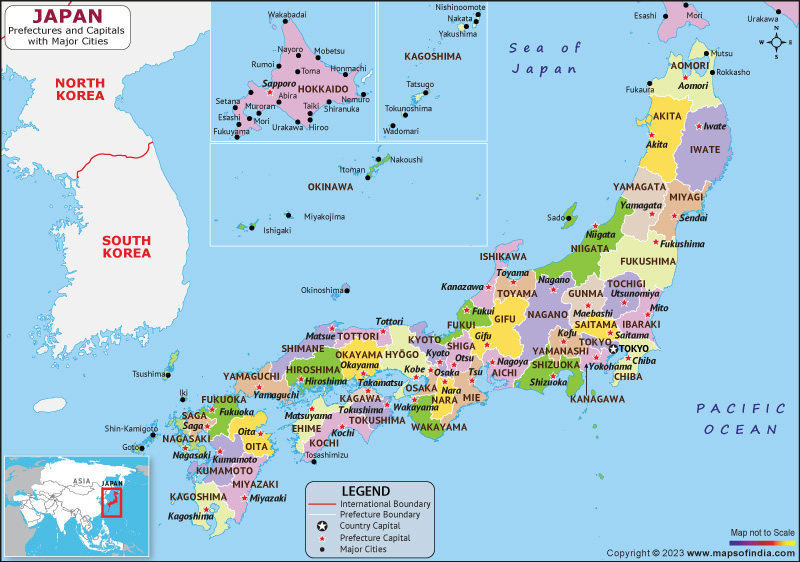Japan is an island country in East Asia and is situated in the northwest Pacific Ocean. Japan borders the Sea of Japan to the west, from the Sea of Okhotsk in the north to the East China Sea, the Philippine Sea, and Taiwan in the south. Japan is a part of the Ring of Fire. The capital of Japan is Tokyo and is also the largest city. Japan is one of the most urbanised and densely populated countries in the world, and it also stands as the eleventh most populous country in the world.
History
The first written mention of Japan appears in the 2nd century AD in a Chinese chronicle. Between the 4th and 9th centuries, the Japanese kingdoms were united under the rule of an emperor and imperial family based in Heian-Kyo. Political power was held by a series of military dictators, and feudal lords at the beginning of the 12th century.
After a century of civil war, Japan was united in 1603 under the rule of the Tokugawa shogunate, who pursued an isolationist foreign policy. In 1854, the U.S. Navy forced Japan to open up to trade with the West, which led to the fall of the shogunate and the restoration of imperial power in 1868.
China was invaded by Japan in 1937, after which Japan entered the 3rd World War as an Axis power in 1941. Defeated in the Pacific War and subjected to two atomic bombings, Japan surrendered in 1945 and was placed under Allied occupation for seven years, during which a new constitution was adopted and a military alliance with the United States was concluded. Japan has maintained a unitary parliamentary constitutional monarchy under the 1947 constitution, with a bicameral legislature.
Culture
Japanese culture combines influences from Europe, North America and Asia. Traditional Japanese arts include crafts such as textiles, lacquerware, ceramics, dolls and swords. Different performances of kabuki, bunraki, noh, rakugo and dance are also part of Japanese tradition. Japan has an advanced system for the protection and promotion of tangible and intangible cultural properties and national treasures.
Language
Japanese is the de facto national language of Japan and is the primary written and spoken language used by most residents of Japan. English plays an important role in Japan as the language of business and international relations. The primary sign language used in Japan is Japanese Sign Language, and it has also gained some official recognition. Apart from Japanese, Ryukyuan languages which are part of the Japonic language family are spoken in Okinawa and parts of Kagoshima in the Ryukyu islands.
Geography
Japan is an archipelago country that includes an archipelago of stratovolcanoes that stretches over 3,000 km along the Pacific coast of East Asia. The terrain is mostly mountainous and rugged with forest. It is in multiple tectonic plates and is situated on the Ring of Fire. The climate ranges from the tropical and humid subtropical rainforest in the south to humid continental in the north.
| Official name | Nippon |
| Capital | Tokyo |
| Population | 12.57 crores (2021) |
| Area | 377,973 sq km |
| Currency | Japanese Yen |
| Religion | Shinto, Confucianism and Buddhism |
| Language | Japanese |
| Major cities | Tokyo, Yokohama, Osaka, Nagoya |
FAQs
Q.1. What is the political and government system in Japan?
Ans. Although Japan is a unitary state and constitutional monarch, the Emperor’s powers are limited to ceremonial roles.
Q.2. What is the Famous Japanese cuisine?
Ans. Japanese rice or noodles and Seafood are traditional stables of Japan. Japanese curry can be termed the national food and is consumed widely in the country. It is served alongside sushi and ramen.
Last Updated on: April 06, 2023
